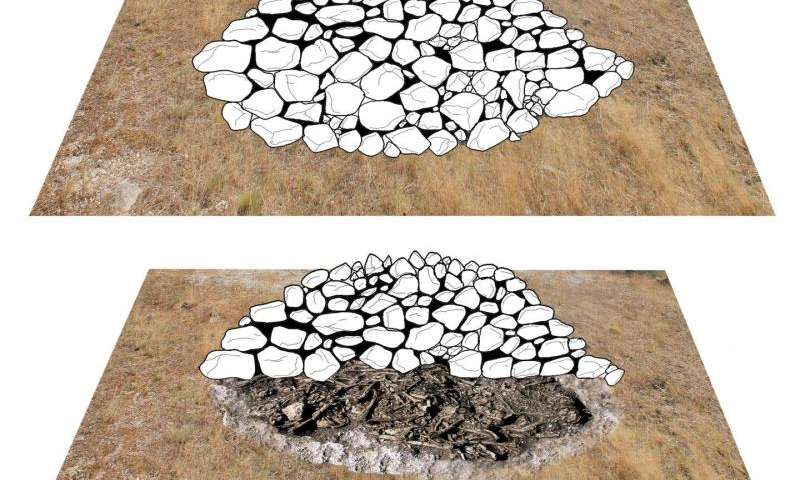Alto de Reinoso
- Period: Late Neolithic
- Location: Spain
- Burials: 47 individuals
- Archaeologists: Alt KW, Zesch S, Garrido-Pena R, Knipper C, Szécsényi-Nagy A, Roth C, Tejedor-Rodríguez C, Held P, García-Martínez-de-Lagrán Í, Navitainuck D, Arcusa Magallón H, & Rojo-Guerra MA
- Related Keyword/Categories: Inhumation, Secondary Burial, Identity, Paleopathology, Funerary Practice

Alt et al. (2016) uses a wide range of anthropological and scientific techniques to examine a mass burial from Spain. The tomb dates to the Late Neolithic period (4000-3000 BCE), a period of great change due to the introduction of agriculture. Alt et al. (2016) use an integrative approach combining a variety of methods in order to better interpret the individuals who were buried in one of these Late Neolithic megalithic tombs, found at Alto de Reinoso. They used the human remains to determine age, sex, trauma, stress, disease, and activity patterns. Additionally, took samples of mtDNA in order to determine biological relationships between the individuals, and conducted stable isotope analysis using strontium, carbon and nitrogen to determine whether they migrated and what their diet consisted of. Combining these three methods together, they are able to really create a nuanced interpretation of who these people are. The megalithic tomb contained a high density of human remains found in two layers: 1) disarticulated and disturbed human bones including groupings of skulls and long bones that may have been intentionally arranged, and 2) primary burials below that had not been disturbed and included 12 individuals. Within the tomb there was also a small amount of grave goods including personal jewelry like beads and tusks, as well as some stone axes and blades. The deposits date from 3770 to 3539, indicating that the tomb was likely used over the course of 80 years or three generations of individuals. The minimum number of individuals from the tomb is 47, although they were only able to identify skulls for 21 adults and 17 subadults. 11 individuals were identified as male and 12 as female. Paleopathological evidence was typical for a Neolithic farming population- a number of individuals showed degeneration in the spine due to labor, there were four different fractures found, and one example of blunt force trauma to the skull. Seven individuals showed signs of non-specific stress, possibly related to disease or malnutrition. Of the total sample, 14.5% showed signs of tooth decay. DNA analysis revealed that more than half of the individuals share genetic characteristics with other individuals in the tomb, and all individuals likely came from around Spain or Portugal. Based on carbon and nitrogen isotopes, they determined that these individuals had a mixed diet of farmed grains and animal proteins. Based on this evidence, Alt et al. (2016) argue that the megalithic tomb was used by a small farming community consisting of close family members who lived and died within the same area. The community was egalitarian, meaning that there were no strong differences between individuals based on status, age or sex. Their burial together in a single tomb demonstrates and maintains the close bond that they had in life. The purposeful arrangement of skeletal material in the upper layers shows a close relationship to the deceased and their ancestors, and the tomb may have been a way of maintaining relationships among the living.
References: Alt KW, Zesch S, Garrido-Pena R, Knipper C, Szécsényi-Nagy A, Roth C, Tejedor-Rodríguez C, Held P, García-Martínez-de-Lagrán Í, Navitainuck D, Arcusa Magallón H, & Rojo-Guerra MA (2016). A Community in Life and Death: The Late Neolithic Megalithic Tomb at Alto de Reinoso (Burgos, Spain). PloS one, 11 (1) PMID: 26789731


